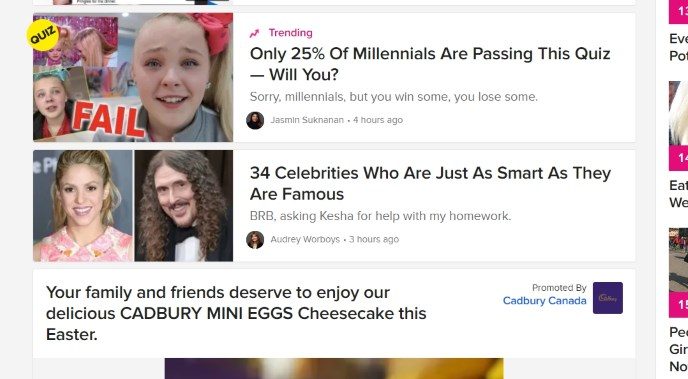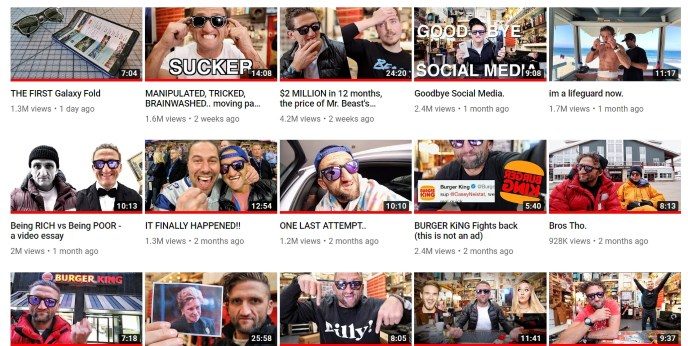The good news is that just about anyone with an Internet connection can have a voice online. The bad news is that just about anyone with an Internet connection has a voice online. Everyone is vying for the attention of everyone else. Everyone is looking for those likes, those views, those click-throughs, so how do you break your signal through all that noise?
The reality of the situation is that if you hope to attract some traffic (or views) by way of social media platforms, you will always be at the mercy of their algorithms. This is true for ranking in Google and other search engines too. And even if you should break through that algorithm and have your content put in front of actual eyeballs, many of those eyeballs are only going to see your title (or maybe a thumbnail image). You need to break through another barrier and capture the interest of your audience right away.

Several experts, apparently borrowing much of their inspiration from Buzzfeed and similar types of “viral” websites, have posited that the ultimate headline formula goes a little something like this:
Number + Adjective + Keyword + Rationale + Promise
With tongue planted firmly in cheek, the headline for this very blog post was partly inspired by that formula. I’m sure you noticed. And if you’ve read this far, it means that the headline probably worked. If I were to stick to the arrangement of that “ultimate headline formula” a little more strictly, I might end up with something like:
2 Awesome Blog Headline Formulas to Attract Readers and Blow Up Your Traffic Numbers
Even if you were to dismiss this “ultimate” headline formula for a moment, what you’ll find is that you ultimately have one of two main choices when it comes to writing an attractive headline for a blog post or a title for a YouTube video. And these two choices really depend on who you are trying to attract toward the content in the first place.
The Keyword-Rich SEO Bait
When you have a relatively smaller audience (and, let’s face, everything is relative) and your goal is to attract new readers, new subscribers, new followers and new fans, then you really need to be framing your titles and headlines in such a way as to show up in those search results.
I know. If you live by the Google, you die by the Google, but that’s also very much the reality for the overwhelming majority of online content creators, even if they have larger audiences. You need to get noticed. You need to please those algorithms so that you content appears when people are looking for something.
Want to attract people who are interested in visiting Taiwan to your travel blog? Well, by golly, you’d better include some keywords relevant to searches people would conduct when thinking about taking a trip to Taiwan. There are plenty of ways to research these keywords, from Google Trends to Ubersuggest. These are a great way to drill down into the longtail keyword strings too.
The point is whether you’re writing the title for a blog post, a YouTube video, a Kindle ebook, or any other piece of online content, strategic inclusion of keywords in your title are how you’re more likely to get noticed by people who don’t know or don’t follow you already.
The Sensationalist Clickbait Teaser
On some level, when you already have a huge audience, you may not necessarily need to turn to the strategy above. That’s because you’re not necessarily trying to please the algorithm gods, because your bigger source of traffic isn’t from search; it’s from people who already follow or subscribe to you.
What you want are views, clicks, likes, comments, and other forms of engagement. Traffic and views are good, and this feeds back into the system so that your current and future content is more likely to show up in their feeds again.

Someone like Casey Neistat might be a good example of this when it comes to YouTube. He doesn’t really need to include keywords in his video titles, because he’s not after that search traffic necessarily. Instead, many of his videos have what you might call “clickbait” titles, along with “clickbait” thumbnail images.
Several of his videos have short titles that don’t really say anything, like “IT FINALLY HAPPENED!!” AND “ONE LAST ATTEMPT..” They could be sensationalist or teasing; the point is that they’re supposed to tickle your curiosity to the point where you can’t help but to click through and watch the video. If you subscribe, you’re already a fan. You already know who he is and what to expect. All you need is that last little nudge.
One for You, One for Me
Realistically, the best strategy when it comes to writing awesome blog headlines and YouTube titles is to find a balance between these two strategies. The “one for you, one for me” approach makes the most sense insofar as you’ll write some headlines that are meant to attract new audiences, and other titles that appeal to your existing followers.
What happens next? Well, as is the case with just about everything else online, it’s really anyone’s guess… but your headlines will always matter, because they’ll always be one of the first thing readers see, and it might be the only thing they see if you can’t get that click.
